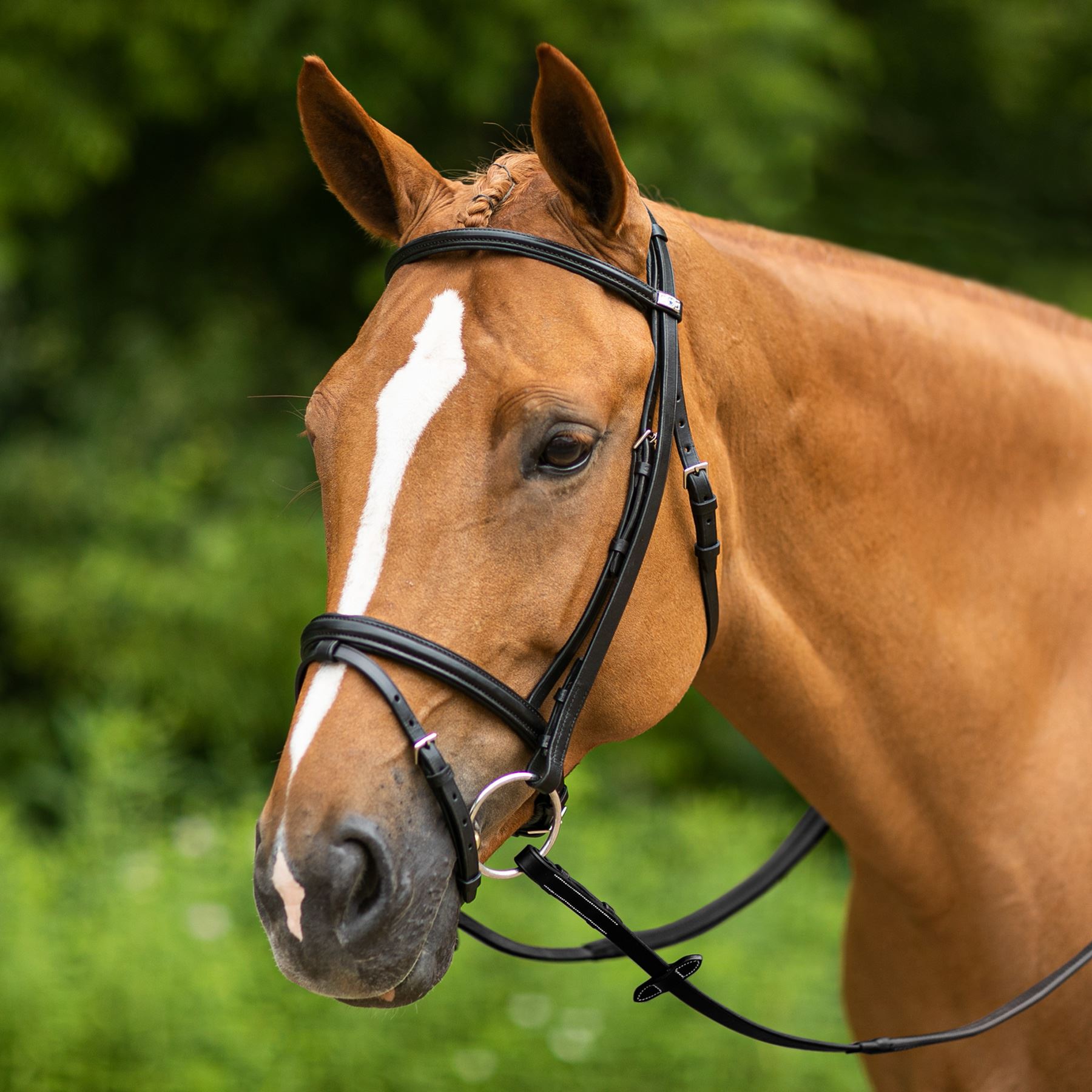The head has more nerve sensitivity than any other part of the body.
by Mary Ann Simonds
kt
The nose/mouth/smell system of the horse is critical for obtaining and processing sensory information and hence has more nerves-to-pro-preceptor ratio than any other place in the body. In other words, as discomfort and pain increase, the horse is less likely to be able to think, breathe, and perform.
Horses were never designed to wear bridles, but they do seem to adapt to our human creations. Head discomfort often goes unnoticed until a behavioral or physical problem shows up. Luckily though, head stress due to bridles is easy to fix.
In more than 30 years of assisting with performance horses and riders, I find it interesting to see how many horses have improved performance by simple bridle adjustments relieving stress on their heads. One of the most common behavioral problems due to head discomfort is a horse refusing to go forward. Simply loosening the nosebands on many of these athletes has instantly solved the problem. I have witnessed Grand Pix Jumpers on both coasts performing in improper headgear, start refusing to jump or start pulling rails down behind due to improperly fitting bits, nosebands or other bridle gear. With a few minor adjustments they have gone on to win. All we did was remove the painful bit/noseband/head pulley system and substitute it for a loose, well-fitted headpiece that allowed communication and freedom from discomfort. The same is true for the dressage horses; by loosening their nosebands, not only could they breath better, but their strides lengthened and the their scores improved.
Pressure Point Checkup
Facial nerves and circulation can be damaged by bridles that fit too tightly, rub or pinch the horse’s head. The caudal auricular nerve and the Auriculo-palpbral branch of the facial nerve can be pinched or irritated by the browband and headstall of a bridle that is too tight or bad fitting. Sensitive circulatory veins and arteries as well as the nasal bone can be damaged by nosebands that are too tight.
unknown
All parts of the horse?s head should easily move when wearing a bridle so that muscles of the ears, jaw, lips and nose are not restricted. Tension or restriction in the head can lead to teeth grinding, biting the tongue, tension in the poll and neck, restricted movement, headaches, restricted breathing and smell, as well as general discomfort and distraction. Horses occupied by pain do not think or perform well.
kt
Nosebands
Nosebands were designed to hold the horse’s jaw closed while galloping across a battlefield so it would not bite its tongue off with the extra weight of a rider pounding down on it. The noseband serves little use today other than to cause discomfort for horses and look nice.
kt
Loose enough
a. Nosebands should not rub, press or irritate sensitive protruding skull bones.
b. Nosebands should be worn loose enough to allow a hand width between the noseband and the horse.
c. Nosebands should not pinch sensitive skin or press on circulatory system or nerves. Check head chart to see if you cannot observe your horse’s head adequately.
Browbands
kt
Pressure points of the browband
Browbands
Browbands should not rub or press on sensitive protruding skull bones or on muscles. Ears should be able to move easily and not have pressure on muscles.
Cheek pieces
Cheek pieces should not rub or press on protruding skull bones.
Headstalls
Headstalls that are too narrow, too wide or too tight can all cause discomfort. Horses can get headaches from pressure of headstalls or brow bands that are too tight. And of course they have no way to tell us their head hurts other than to throw their heads in the air or try and find a way to release the pressure.
kt
Bits
Not all horses fit all bits. Those with very sensitive thin lips often have difficulty wearing any bit. Thick, short-lipped horses also have difficulty with fitting bits. If a horse opens its mouth with a bit, it is usually not comfortable. Putting a tight noseband on the horses to keep its mouth closed is not the answer. Finding a comfortable bit or using a Bitless Bridle is the right answer.
If you care about horses, petition your own discipline’s regulatory organization to not allow damaging head gear.
Mary Ann Simonds is an equine ecologist, horse behaviorist and natural health consultant. . She can be reached at maryann@maryannsimonds.com
Tags
bridle fitenglish bridlenose bandbrow bandbitsheadstallspressure points

